- Administrator
- Albums and Singles
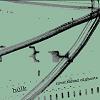 With the name Hulk and a sleeve color of an angry Bruce Banner I was expecting this album to be muscular and dominating but instead it is subdued and peaceful. The title of the album is apt, as there is a serene, supernatural feeling permeating the recordings. It is sad yet deeply comforting music.
With the name Hulk and a sleeve color of an angry Bruce Banner I was expecting this album to be muscular and dominating but instead it is subdued and peaceful. The title of the album is apt, as there is a serene, supernatural feeling permeating the recordings. It is sad yet deeply comforting music.
Osaka Recordings
Silver Thread of Ghosts rarely makes much of a fuss. It is music that sits easily into the background becoming a presence that radiates gently from across the room instead of music that is constantly distracting. Sometimes the music reaches out like a spirit to touch the listener, when it does it is almost shocking. “The Moon Versus the Sea” is one such spirit, the rich sound of the cello and the sudden stop/start structure to the piece is like a slap in the face after the first three pieces which are beautiful but fade into the background. They’re by no means bad; “Star Bed” uses recordings of many everyday rhythmic sounds like windshield wipers and waves lapping on the shore, sounds that are normally ignored and only when attention is drawn to them does their charm become apparent. Hulk do this admirably.
The album is consistent in quality and theme. Only once did I find their music cloying and that is on the mercifully brief piece “8.52am Goodbye.” Apart from this one blemish, the album is wonderful. As well as having a good ear for environmental sounds, they also have a good ear for songwriting. The melodies and rhythms found on Silver Thread of Ghosts are a delight to listen to. They’re not a radical rewriting of music as we know it but they delicate and pretty which suits the mood perfectly. Pieces like “We Ran” and “Mytikas” form the backbone of the second half of the album, showing Hulk at their finest. As the all too brief album comes to a close I can’t wait for it to finish so I can play it again.
Silver Thread of Ghosts sounds like the antithesis of the group’s name: it is soft and sensual. The music is exquisite; the songs are the perfect length, rarely breaking the five minute mark. This gives the pieces enough time to breath but stops them becoming overworked.
samples:
Read More
- Administrator
- Albums and Singles
 The primitive sounding blues being played on White Man at the Door is similar to Tom Waits or Nick Cave’s early excursions with The Bad Seeds. The Lost Domain never match those artists for power and originality but like those artists they do give modern blues playing a swift kick. It is the dark mythological blues that only came into existence when white people came onto the scene (something that is alluded to in the title of the album), something that has been done to death but can still provide the odd surprise. By no means is this a masterpiece but this album at least had some life as the band puts their own spin on the blues.
The primitive sounding blues being played on White Man at the Door is similar to Tom Waits or Nick Cave’s early excursions with The Bad Seeds. The Lost Domain never match those artists for power and originality but like those artists they do give modern blues playing a swift kick. It is the dark mythological blues that only came into existence when white people came onto the scene (something that is alluded to in the title of the album), something that has been done to death but can still provide the odd surprise. By no means is this a masterpiece but this album at least had some life as the band puts their own spin on the blues.
The six recordings included here were started four years ago and never finished. On some of the pieces it is impossible to tell that they are incomplete, elsewhere the shortcomings are obvious. However, the sound of the record is always flawless. All the pieces sound like they were recorded live in a large empty room, the reverb spilling with atmosphere. It’s possible to differentiate the physical distance between the players and the microphone; it is a very natural sounding record. Granted it is rough sounding but the roughness of the recording fits the songs like a dirty glove.
As nice as the recordings sound this doesn’t hide the fact that these are unfinished songs. “Boll Weevil” meanders and dithers for its duration, going nowhere. It sounds like a demo where the band might take one or two details from to make a new song rather than a stand alone piece. The same can be said of a couple of other pieces, they’re the kind of thing that would be of interest if the songs had been completed to see how they had evolved. Instead of evolution, much of the music here sounds extinct. On the other side of things, there are a couple of pieces that sound great as they are. “In My Time of Dying” is a long and repetitive piece with lots of fire and conviction in The Lost Domain’s playing to keep me listening. The simple beat and hollering strip the music and the emotion down to its bare essentials, it is a cathartic fifteen minutes.
White Man at the Door is an average album with moments of brilliance. Alas these moments don’t come often enough as the incomplete nature of the recordings show the songs as bare skeletons without enough flesh or vitality to constitute a song of their own. I’d be interested to hear some finished material by The Lost Domain to compare to this disc but as it stands it’s not something I’ll come back to too often.
samples:
Read More
- Administrator
- Albums and Singles
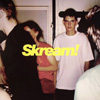 The mysterious Burial had the jump on everyone in dubstep this year, delivering the burgeoning underground scene's most anticipated artist album months in advance of anyone else. However, based on the virulent virility of Skream's unpretentious, nearly eponymous debut, I suspect I, and many others, will be more inclined to listen to this album far more regularly.
The mysterious Burial had the jump on everyone in dubstep this year, delivering the burgeoning underground scene's most anticipated artist album months in advance of anyone else. However, based on the virulent virility of Skream's unpretentious, nearly eponymous debut, I suspect I, and many others, will be more inclined to listen to this album far more regularly.
A dancefloor prodigy, Skream doesn't do the former's recurrent darkness and menacing esoterica. Instead, as famously illustrated in the DJ mixes of his that I have either downloaded or experienced firsthand, Ollie Jones brandishes melody and bass as if they were the deadliest of weapons, though more like a principled honor-bound samurai than a brutal for-hire sadist, and over these fourteen absolute bangers he leaves no doubt of his abilities. The young man painstakingly manipulates woofer-rattling low-end yet also crafts infectious hooks that furiously burrow into the ear and straight into the brain, assuring instantaneous recognition on the mandatory rewind. His breakout single, "Midnight Request Line," did just that, and its inclusion alone makes Skream! a vital purchase.
There are many staples here that, stylistically, define a good swath of the thriving genre, from the gorgeous stepper "Dutch Flowerz" to the warbly "Stagger." Beyond these imitable templates lie several delightful permutations and creative "Rutten" updates "Rottan" from Skreamizm Volume 1 with re-recorded flute melody and an extended sample of the infamous Spliff Politics speech from the film Human Traffic. Proper two-step, a style I first embraced at the height of its popularity in 2000, makes an appearance on "Summer Dreams," a jazzy slice of deep summery hedonism able to combat these dropping autumnal temperatures. If that weren't enough, "Check It," a dubwise collaboration with the almighty Warrior Queen, takes things to a ridiculously high level. Borrowing elements from Mary Wells' classic "My Guy," the dancehall diva sings of a good man over a sizzling reggae-esque beat that simply wont quit.
A lone misstep, albeit a slight one, "Tapped" assuredly would have been better off free of input from Roll Deep affiliate JME both lyrically and vocally, though this raucous tune itself can hardly be held back by some pesky grime MC. Beyond this, Skream's bright, dub-inflected and garage-informed tunes have massive potential appeal and this approachable dubstep album, if distributed and promoted suitably, should make converts quicker than a Billy Graham revival. And if you didn't catch that last reference, it's really for the best.
samples:
Read More
- Administrator
- Albums and Singles
 Like all great seven inch releases, this Volcano the Bear disc crams a few of this band’s multiple facets into one value for money package. These three utterly independent cuts highlight a band that never seems to settle into a style, even within the constraints of a single piece of music.
Like all great seven inch releases, this Volcano the Bear disc crams a few of this band’s multiple facets into one value for money package. These three utterly independent cuts highlight a band that never seems to settle into a style, even within the constraints of a single piece of music.
Building in ritualistic whispers and steely scrapings, the title track is a moody but fragile creation. Ear pinching whines that burrow into the head are reassured into silence by the other elements. Hidden room piano notes pierce rushing cymbal runs and tape manipulation, providing the song’s core. Volcano the Bear’s ability to shape formless collections of elements without imposing a strict structure is one of their greatest talents; their prescient live playing coming to fruition in their live recordings.
The plucked strings and the thin violin investigations of the “The Ark” run contemporaneously, fuelling the possibility of cross pollinated melody. Purposefully fumbling over these options, ostracising structure, the high single toned horn parts lead the song to is end.
The minute-long closer, “The Pincher,” takes things out on a full of beans high. The sambuca and beer studio party that that birthed the song leaves it swinging unsettlingly between the headphones like a woozy, randy drunk. There’s more than a double of shot of Tom Waits on the breath of this track. Being as catchy as it is this cut-up-and-sellotaped ramshackle bash-along could do with being a few minutes longer.
Another in a long line of brilliantly inspired group (and superb solo releases), Birth of Streissand shows their collective spirit has no sign of dimming.
samples:
Read More
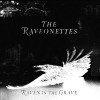 For a duo that started out as VU and JAMC copyists nearly a decade ago, the Raveonettes have progressed a long way. They came close to perfecting their bubblegum-sweet melodies and blasts of razor-sharp guitar hooks on their last album, 2009's In and Out of Control. Smartly, their new album doesn't look to one-up past accomplishments—it takes a hard left into uncharted territory.
For a duo that started out as VU and JAMC copyists nearly a decade ago, the Raveonettes have progressed a long way. They came close to perfecting their bubblegum-sweet melodies and blasts of razor-sharp guitar hooks on their last album, 2009's In and Out of Control. Smartly, their new album doesn't look to one-up past accomplishments—it takes a hard left into uncharted territory.
- Administrator
- Albums and Singles
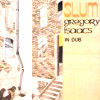 Gregory Isaacs is most known for his vocal works as a reggae singer, with recordings stretching back to the 1960s and worldwide acclaim through releases on Trojan, RAS, Front Line, and other noteworthy labels. However, back in 1978, with a little assistance from reggae royalty King Tubby and Prince Jammy, Isaacs produced this masterpiece, perhaps my own personal Holy Grail of classic dub.
Gregory Isaacs is most known for his vocal works as a reggae singer, with recordings stretching back to the 1960s and worldwide acclaim through releases on Trojan, RAS, Front Line, and other noteworthy labels. However, back in 1978, with a little assistance from reggae royalty King Tubby and Prince Jammy, Isaacs produced this masterpiece, perhaps my own personal Holy Grail of classic dub. Songs from Slum In Dub have popped up on dub compilations for years, and on the comps I own with songs from Slum always ended up being my favorites, but the actual album of this has eluded me for years. I was completely stunned to simply find it inconspicuously sitting in a record shop bin in NY on a recent trip. It's that familiar routine: there's some running mental list of records that seem to be nothing but elusive and so many bins end up being checked when away from home that the expectations are next to zero. Now I'm more than thrilled to know it is now being widely distributed again thanks to Mr. Isaacs' own African Museum label.
As aforementioned these songs always stood out above the rest on dub comps: deep and dirty sounds were soaked with soul and almost completely void of vocals. Bass and drums groove along with the rhythm guitar while a keyboard instrument (melodica or organ) takes the lead. More than likely there's somebody present whose primary function is to trigger echoed delays on the right instruments at the right times. The sound is hypnotic and its effects are euphoric. Slum is fourteen tracks of gems like this that I wish went on much longer.
There's magic is in the simplicity of playing, as it's a jam but not by a collection of soul-less music school students showing off. It's restrained, and this is a talent that so many youngsters—even those on tour with people like Mad Professor at the dials—fail to possess. It makes Slum In Dub an album to come back to over and over again as both a listening and a learning experience.
samples:
Read More
- Administrator
- Albums and Singles
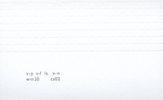 Given that each of the 51 pieces on this compilation are all roughly a minute in duration, there is a lot of hopping around here, with disparate pieces put aside one another to create some varying transitions, sometimes brilliant, sometimes confusing. Unsurprisingly, the individual contributions follow a similar pattern, with some moments that I wish were longer, and others I could do without.
Given that each of the 51 pieces on this compilation are all roughly a minute in duration, there is a lot of hopping around here, with disparate pieces put aside one another to create some varying transitions, sometimes brilliant, sometimes confusing. Unsurprisingly, the individual contributions follow a similar pattern, with some moments that I wish were longer, and others I could do without.
Many of the artists on this compilation work within field recordings, with the strengths and weaknesses of that approach becoming quite obvious throughout.The two pieces by Sawako are examples of field recording at its best:a strong balance of sounds that are familiar and alien are there, with an extremely subtle melodic accompaniment.Label owner Ben Owen's "Lisbon Station" is also a favorite, capturing a mechanical, rhythmic repetition of sound that has an unrecognizable color to it.
Good field recording artists, to me, are ones that use environmental sounds in such a way that is recognizable, but also draws attention to elements that I normally wouldn’t hear in my every day life.The urban emptiness and chirping birds of Manfred Werder/Incidental Music’s "2008(1)" are, to me, too sparse and conventional to be engaging.The same with Stefan Thut's pieces, two of which sound simply like tape recordings of an empty room.
Other contributions follow different trajectories, such as the brilliantly hyperkinetic squelches of sound that comprise both of Giuseppe Ielasi's contributions, as does the industrial clatter and chaos of Jason Kahn's work.Toy.bizarre’s "kdi dctb 195 [c] – 05" also stands out as a tumbling mess of metal percussion and eerily unidentifiable scrapes and groans.
The two pieces on each side of the tape by Dominic Lash also stand out conceptually, with the first side running a cello through subtle digital processing, blurring the line between instrument and effect, while the fragmented nature of the second piece sounds like the dissection of the first, pulling individual tones out and examining them carefully.
One reason this compilation works so well is that the pieces are so short and varied, and thus cover a lot of ground without ever feeling overly random or haphazard.There wasn't a moment I was ever motivated to fast forward the tape to the next track, but in many cases, such as the textural static layers of the closing "transmission_1.1" by Robert Curgenven, I simply wished for more of a piece.Rarely is there a compilation where I’m motivated to play through the entire thing multiple times, but here is one of those exceptions.
Read More
- Administrator
- Albums and Singles
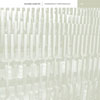 Celebrating the LINE label's status as a separate entity and Chartier's 2010 Smithsonian fellowship (as well as his 40th birthday), Transparency is the document of an hour long performance using the historic Grand Tonometer as it’s primary source. The result is a subtle piece that is captivating, but also demanding
Celebrating the LINE label's status as a separate entity and Chartier's 2010 Smithsonian fellowship (as well as his 40th birthday), Transparency is the document of an hour long performance using the historic Grand Tonometer as it’s primary source. The result is a subtle piece that is captivating, but also demanding
The Grand Tonometer is an instrument built by Rudolph Koenig, consisting of 692 tuning forks ranging over four full octaves.Transparency utilizes recordings of many of the forks, in addition to wooden and metal resonators that skillfully blend the pure natural vibrations with crafted, digital variations of them.
The opening, chiming notes show their underlying source rather clearly, but quickly are stretched out for long, drawn out passages via processing.Arriving early and becoming a consistent element are ultrasonic tones that hover near the inaudible end of the spectrum, but thankfully are at a moderate enough volume to keep this from becoming an endurance test.
Changes are subtle, but perceptible in the expansive resonances and reverberations, and the more frigid passages are interrupted nicely by little blurts of tonal bliss, as well as some percussive, crunchy wooden clicks.The latter sound almost like they could be accidents from the source recordings, but are too fascinating and varied for me to believe that's actually the case.
As the piece goes on, there is a greater emphasis on the lower frequencies that counterbalances the shimmering metal tones.At some points there are even some heavy low-end swells that are almost jarring when they appear to balance out the sharper moments.
The closing minutes are almost visceral in their effect:some of the higher frequencies I could almost feel in my throat and teeth but, again, not in a painful way.The piece ends as it opened, with the obvious sounds of reverberating tuning forks chiming the piece to its completion.
The only weakness here is that I needed to dedicate my full attention to listening to the piece in its entirety.While I'd never think that Chartier’s work is something to throw on at parties in the background, normally this sort of work I’m ok to put on while reading or writing, but I noticed that lead to me actually tuning the album out.Since the piece is over an hour, that means true dedication is needed to fully enjoy Transparency, but the reward is worth it.
samples:
 
Read More
- John Kealy
- Sound Bytes
This is the first in an irregular overview of cassette releases from a variety of labels. This edition features releases from The Tapeworm, Cassauna, Peasant Magik, Goat Eater Arts and Witch Sermon, including works by Pauline Oliveros, Deceh, Francisco López, Moss and Hoor-paar-Kraat amongst many, many others.
- John Kealy
- Albums and Singles
This is the first in an irregular overview of cassette releases from a variety of labels. This edition features releases from The Tapeworm, Cassauna, Peasant Magik, Goat Eater Arts and Witch Sermon, including works by Pauline Oliveros, Deceh, Francisco López, Moss and Hoor-paar-Kraat amongst many, many others.
The first two tapes from Important Records’ new sub-label Cassauna are both gorgeous examples of contemporary minimalism. The first is 4 by the mysterious Deceh, a quartet (made up of Eleh and three others) who specialize in tight, controlled drones. Analogue synthesizers and what sounds like bowed strings create a mood somewhere between the aforementioned Eleh and Charlemagne Palestine's "Strumming for Strings." The meditative nature of the music is intoxicating and I keep finding myself returning to its warm, welcoming tones.
The second release from Cassauna is a collaborative effort between the mighty Pauline Oliveros and Michael T. Bullock. Accordion to Bass is a fitting partner to the Deceh tape, although on the surface they are different beasts entirely. Percussive double bass and stabs of accordion create a frenetic form of Oliveros' minimalism. However, despite the almost hyperactive form of improvisation on display, Accordion to Bass is as engaging and welcoming as the Deceh tape. Much like the Attention Patterns double LP released on Important a few months ago, these two releases show how minimalism is more than just a sparse arrangement but rather an attack on methodology (with Oliveros sounding very much un-Oliveros-like).
Another new label, Witch Sermon, focuses on the heavier end of the metal spectrum. Their first release is a live recording from occult doom metallers Moss. Despite its bootleg origins, this audience recording has been given one hell of a mastering job as it sounds phenomenal. The band erupt from the speakers like demons from a crypt, ploughing through a selection of songs from their recent Tombs of the Blind Drugged EP and their two main albums. My stereo shuddered and shook throughout the album, songs like "Eternal Return" and "The Gate" hitting like an avalanche.
Also on Witch Sermon, zz's I, Gorgon comes wrapped in frayed twine with a blotchy, hand-painted piece of canvas attached. Part of the joy of these small run cassette labels is the feeling that you are able to get a more private snapshot of an artist at work, the care needed to create and duplicate such an album seeps into my appreciation of the work. It also allows for some truly unusual music to make it out into the world. zz (Andy Lippoldt) is best known as one half of Gorgontongue and is also the main man behind Persistence in Mourning. However, unlike his work with these projects, this solo recording instead sounds like a dog chewing a microphone while a doom band practises next door on side A and some strange mix of doom and tape loops on the b side. It is an odd release to say the least but there is a charm to the chaotic, unpredictable sonic squalor.
Over the last couple of years, The Tapeworm has become the most recognizable bastion for tape culture and it is understandably so when looking at the label’s back catalog. The mix of styles, genre and artistic intents across all the releases make for an Aladdin’s cave of treasured recordings. Their latest releases bolster their reputation as purveyors of fine music on cassette with fantastic releases by Deceh, Philip Marshall, Francisco López and Zan Hoffman. Fundamental Structure by Deceh sees the group exploring more intense frequencies than those on their other release reviewed above. Again this is deeply meditative music but where 4 relaxed me, Fundamental Structure acts more as a stimulant. This is not surprising judging by the liner notes which state that the group have given close "attention… to the organization of isolated frequencies and the effects of these vibrations on brain activity." Clashing tones create beautiful interferences and by moving my head around I can alter the sounds further. This gives way to a pleasant sea of Hammond organ and sruti box, leaving me adrift and at peace.
Both sides of Philip Marshall's Casse-tête follow a very similar path, so much so that I had to consult the liner notes to be sure that it was not the same material repeated on both sides. Strong, clear piano playing opens both sides before giving way to atmospheric if stereotypical field recordings of accordion playing on what sounds like a Parisian street. Both sides finish off with some serious organ drone, side B's performance being particularly powerful. The transitions between the sections are edited beautifully, reminiscent of early Nurse With Wound and I must say that Casse-tête is a gem of a tape.
Concert for 300 Magnetic Tapes by Francisco López and Zan Hoffman is a surprisingly disappointing affair (especially considering Hoffman is known as a fanatic for tape). As the name suggests, this is an archive recording of a live performance from 1994 where López and Hoffman used audio cassettes from hundreds of sound artists to create a dense fog of sound. The different layers merge together into one gray lump and it is hard to get excited about a gray lump. It is a worthwhile release to some extent as an early example of López's work and a rare release of Hoffman's but it pales in comparison to the company it keeps on The Tapeworm label.
Goat Eater Arts also has a couple tapes out, including a new Hoor-paar-Kraat album made in collaboration with York Factory Complaint. This one is a bruiser and sounds completely unlike anything I have heard from Hoor-paar-Kraat before (though I must admit it is my first time hearing York Factory Complaint at all). Sheets of noise, intense synthesizer rhythms and dangerous sounding rumbles are brought together into one expressive, cathartic whole. After a recent discussion with a friend over the poor state of noise (and the obsession with crappy harsh noise wall style), it is great to hear artists pushing noise back into the adventurous maelstrom that made it so appealing to me in the first place. Follow this example, ditch your pedals and get your hands dirty!
Also out on Goat Eater Arts is the debut release from Weeks. This trio pump out some fantastic metal that is reminiscent of the likes of Neurosis and Eyehategod but rougher. Across the two sides of this regrettably short release, their primal assault blew the cobwebs from my ears. If I was sitting down in front of my stereo I imagine I would probably look like the man in the old advertisement for Maxell cassettes. Hopefully Weeks have more in the pipeline because this is killer.
Finally, Peasant Magik have recently unleashed a truckload of new tapes into the wild. Croque Madame (a duo of Melissa Farley and Kat Moran) have put together four awesome psychedelic jams on their I Love to Laugh cassette. A dreamy fog of guitar and keyboard obscure barely decipherable vocals like some sort of sprawling My Bloody Valentine where the melodies and rhythms have long been forgotten. Elsewhere there is a touch of early Low to the music. There is a naivety to the music that makes I Love to Laugh all the more charming; "Caravan of Vegetables" has a distracted whimsy to it which encapsulates all that I like about this tape.
La Répétition is a soundtrack to an independent French film of the same name by Terence Hannum from Locrian. Hannum pulls sparse, desolate tones from his guitar and accordion to conjure up feelings of isolation and that kind of metaphysical angst that French films and literature do so well. I do not know if that is supposed to be the desired effect as I have not seen the movie but the soundtrack definitely stands up on its own. It all comes to the boil on the second side, it sounds like something fairly traumatic must be happening on the screen!
The striking cover art that adorns Fat Burren Moon is unfortunately not matched by Gryn Brvs' music. The first side is a forgettable collage of noise that fades quickly into the background. The second side fares better as a warbly recording of a piano is used as a scaffold for Ian Murphy and Stuart Fernie's atonal recordings. It never gels for me though; there is something good there but the duo does not seem to fully engage with the music to make it truly interesting. Fat Burren Moon ends up sounding like a half-finished sketch.
Pink Priest's And I Watched the Ivy Cover Your House also sounds half-finished but unlike Gryn Brvs, it is more intriguing because of this open ended feeling. James Livingston creates a gentle haze of what are supposedly keyboards (but due to all the fuzz could be anything), never really going anywhere but that is OK because it is an enjoyable journey. The music quickly sends me into reverie and it is only the sudden end of each tape that brings me back. And I Watched the Ivy Cover Your House is pleasantly short, I get the impression that a longer immersion in Livingston's music might mean I would never come back to reality.
Read More
- Administrator
- Albums and Singles
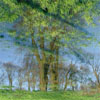 Floating silently through space approximately 1.4 billion km from Earth are the rings of Saturn. Composed primarily of ice particles, they appear as simple concentric circles similar to the grooves in a record. Thanks to the intricate play of moons, magnetic fields, and gravity, their structure is actually far more complex, fraught with braids and knots and unexpected waves of debris. Christoph Heemann's Rings also glide and ripple through the ether, but the space in which they float is both inner and outer, and closer to home than Saturn.
Floating silently through space approximately 1.4 billion km from Earth are the rings of Saturn. Composed primarily of ice particles, they appear as simple concentric circles similar to the grooves in a record. Thanks to the intricate play of moons, magnetic fields, and gravity, their structure is actually far more complex, fraught with braids and knots and unexpected waves of debris. Christoph Heemann's Rings also glide and ripple through the ether, but the space in which they float is both inner and outer, and closer to home than Saturn.
The Rings of Saturn gestated in Christoph Heemann's brain for 11 years before seeing the light of day, a fact attested by the many fragmentary samples and juxtaposed sounds that populate both its sides. Among the ambiguous wisps of drone and low-end swells are numerous environmental and musical recordings, which include the chiming of church bells and bird songs, a bass solo, a television game show theme, the bustle of a busy street, and even an aria. The latter, "Lascia ch'io pianga" from Handel's Rinaldo, appears early on the record and illuminates the design hiding within Heemann's seemingly disconnected edits.
Rinaldo is a patchwork opera, stitched together with songs and ideas Handel had written years before it was commissioned, yet it tells a coherent story and is celebrated among his greatest accomplishments. The Rings of Saturn has that same motley constitution, but it doesn't tell a story the way Rinaldo does; instead, it points toward philosophical and abstract concepts. In the buzz of lawnmowers and the barking of distant dogs Christoph uncovers the quiet moods and secret thoughts tucked away in the corners of the human psyche; he transforms universal sounds from public places into particular and private spaces within the folds of the mind.
Christoph doesn't just produce cinematic candy for the ears, he replicates places, and all the thoughts and ideas that come with them; he finds the locations where personal and public experiences meet and then he straddles that line and dwells there, meditating on the richness of their collision. Thanks to a stellar mixing job, he even captures the wind blowing the trees and the fading buzz of cars rumbling distantly down the road, among numerous other small sounds, each of which further the sensation of worldly and psychological immersion characteristic of the entire record. It's important to keep the volume up in order to catch all the little details. Doing so makes the immersion that much more convincing, and it helps the marching band Heemann recorded boom and blow the way it would were it really passing by on the street.
Field recordings provide the essential gravity for Rings, but processed audio like the kind both Mirror and H.N.A.S. have produced resound prominently in the mix as well. The most striking examples appear in the second and fifth pieces; the former is an icy and elegant bass solo accompanied by glistening synthetic waves and the latter is a monumental wash of glacial bellows and metallic whirls. Amidst these secluded sounds and communal happenings are comedic morsels of audio and bizarre shards of sound bent psychedelically into fun-house shapes. These studio recordings both mimic and cut up the quiet, mental density of Heemann's environmental ambience, but they also emphasize collage as Heemann's primary technique.
On The Rings of Saturn, that technique is refined and tempered into perfect shape. By blurring his many penchants together and submitting them to subtle edits, he has produced one of the very best records released under his given name. It is easily his most listenable and enjoyable album since the Lebenserinnerungen Eines Lepidopterologen collection, but it also feels more substantial and considerate. Still, the elegant weightlessness of its character, the way it hovers quietly through a room, is perhaps its greatest virtue. That might also be the reason Christoph decided to name these recordings after the halo around Saturn. Besides their shared beauty, both orbit a massive hub, which is remote and mysterious. One hub is shrouded in violent gas storms and the cold of space, the other by skin and bones. Heemann teases out the contents of the latter, and what he finds is immensely beautiful.
samples:
 
Read More

